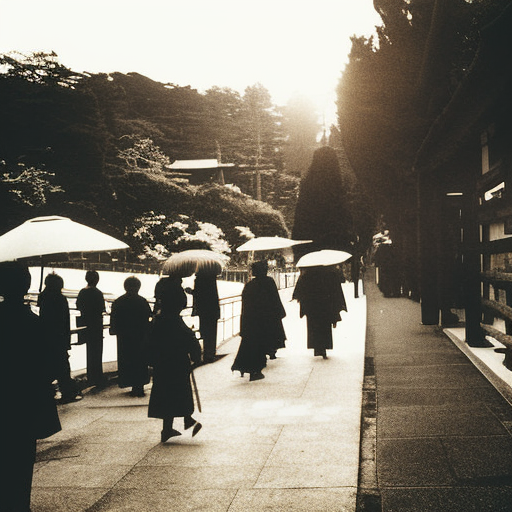Kamakura Period: A Summary
The Kamakura period in Japanese history, which lasted from 1185 to 1333, was a transformative era marked by the rise of the samurai class and the establishment of a decentralized military government. This period was named after the city of Kamakura, where the shogunate, or military dictatorship, was centered. The Kamakura period witnessed significant political, social, and cultural changes that shaped Japan’s future.
Minamoto no Yoritomo and the Rise of the Shogunate
The Kamakura period began with the Genpei War, a conflict between the Taira and Minamoto clans. Minamoto no Yoritomo emerged as the victor and established the Kamakura shogunate, becoming the first shogun in Japanese history. The shogunate was a military government that held real power, while the emperor remained a figurehead. Yoritomo’s rule marked a shift in power from the imperial court to the samurai class.
Feudal System and the Samurai
During the Kamakura period, Japan adopted a feudal system, with power and land distributed among the samurai. The samurai were warrior nobles who served as the ruling class and were bound by a code of conduct known as bushido. They were granted land in exchange for their military service and loyalty to their feudal lords, known as daimyo. This system created a decentralized structure of governance, with the daimyo exercising significant control over their territories.
Mongol Invasions
One of the most significant events of the Kamakura period was the attempted Mongol invasions of Japan in 1274 and 1281. The Mongols, led by Kublai Khan, sought to conquer Japan but were repelled by the samurai and a series of typhoons, known as kamikaze, which were believed to be divine intervention. These failed invasions had a profound impact on Japan, reinforcing the samurai’s sense of invincibility and their belief in the divine protection of the country.
Art and Culture
The Kamakura period witnessed a flourishing of art and culture, particularly in the form of Zen Buddhism. Zen teachings, emphasizing meditation and direct experience, resonated with the samurai class and influenced their way of life. Zen temples, such as Kencho-ji and Engaku-ji, were established in Kamakura and became centers of learning and artistic expression. Zen-inspired art, including calligraphy, painting, and sculpture, flourished during this period.
Decline and Fall of the Kamakura Shogunate
Despite its initial success, the Kamakura shogunate faced internal conflicts and external threats. The shogunate’s power weakened due to infighting among the samurai clans and financial difficulties. In 1333, Emperor Go-Daigo launched a successful rebellion against the shogunate, leading to its downfall and the end of the Kamakura period.
Legacy of the Kamakura Period
The Kamakura period left a lasting impact on Japanese history and culture. It marked the beginning of a long era of samurai dominance and the establishment of a decentralized feudal system. The rise of Zen Buddhism and its influence on art and culture continued to shape Japanese society in subsequent periods. The Kamakura period also set the stage for future power struggles between the samurai and imperial court, which would shape Japan’s political landscape in the centuries to come.












